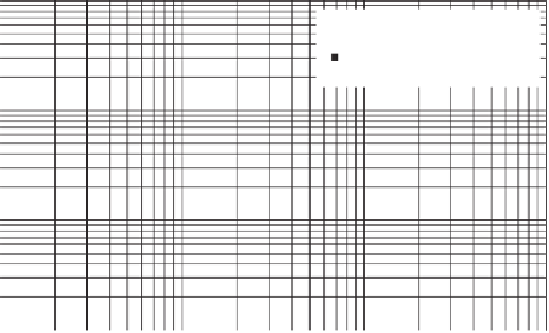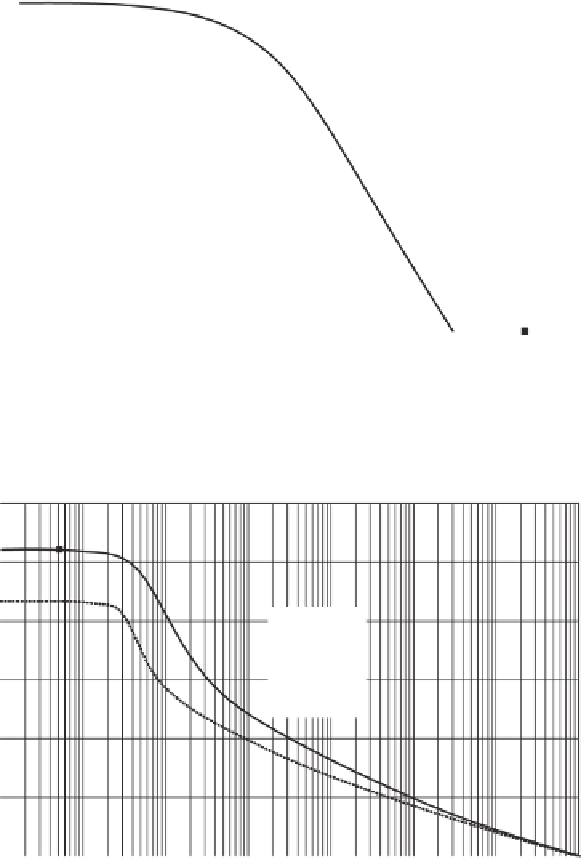Environmental Engineering Reference
In-Depth Information
1
Predicted coefficient of
permeability
Measured coefficient of
permeability
0.1
0.01
0.001
0.1
1
10
100
Soil suction, kPa
Figure 8.22
Comparison of predicted and measured relative permeability function for Yolo light
clay. (Data from Moore, 1939.)
60.0
Best-fit curve (drying)
Best-fit curve (wetting)
Water content (drying)
Water content (wetting)
50.0
Drying curve
= 5.61
= 2.24
= 0.4
= 300
40.0
a
f
n
f
m
f
ψ
r
30.0
Wetting curve
= 3.12
= 4.86
= 0.23
= 100
20.0
a
f
n
f
m
f
ψ
r
10.0
0
10
6
0.1
1
10
100
1000
10,000
100,000
Soil suction, kPa
Figure 8.23
Fredlund and Xing (1994) SWCC fit of experimental data for Guelph silt. (Data
from Elrick and Bowman, 1964.)
section are primarily in the low-soil-suction range. Equation
8.19 for the SWCC can also be used to fit experimental data
in the high-soil-suction range. It is no longer necessary to
estimate the residual volumetric water content
θ
r
for each
soil when predicting the coefficient-of-permeability function
in the high-soil-suction range. Reasonable predictions of the
coefficient of permeability function appear to be possible for
a wide range of SWCCs.
It would appear that volume changes associated with
changes in soil suction are the primary reason for deviations
between measured permeability functions and estimated
permeability functions. It appears to be better to give
consideration to the degree-of-saturation SWCC when
performing integration along the SWCC when there are
volume changes associated with soil suction changes. It is
recommended that the SWCC also be measured in the high-
soil-suction range (i.e., at soil suction higher than the
residual suction).
The accuracy of the estimated coefficient-of-permeability
function depends not only on the closeness of the best-fit
curve to the experimental soil-water characteristic data
but also on the precision of the model adopted. Mualem
(1986) concluded that there was no single physical model
that fits every soil. Proposed permeability estimation
models have been found to be most satisfactory for sandy
soils, whereas agreement with experimental data may not
be satisfactory for fine-grained soils. The flexibility of
Eq. 8.21 can be increased by multiplying the equation by
a correction factor
q
which takes tortuosity into consid-
eration (Mualem, 1986) and increases the flexibility of the




































Search WWH ::

Custom Search